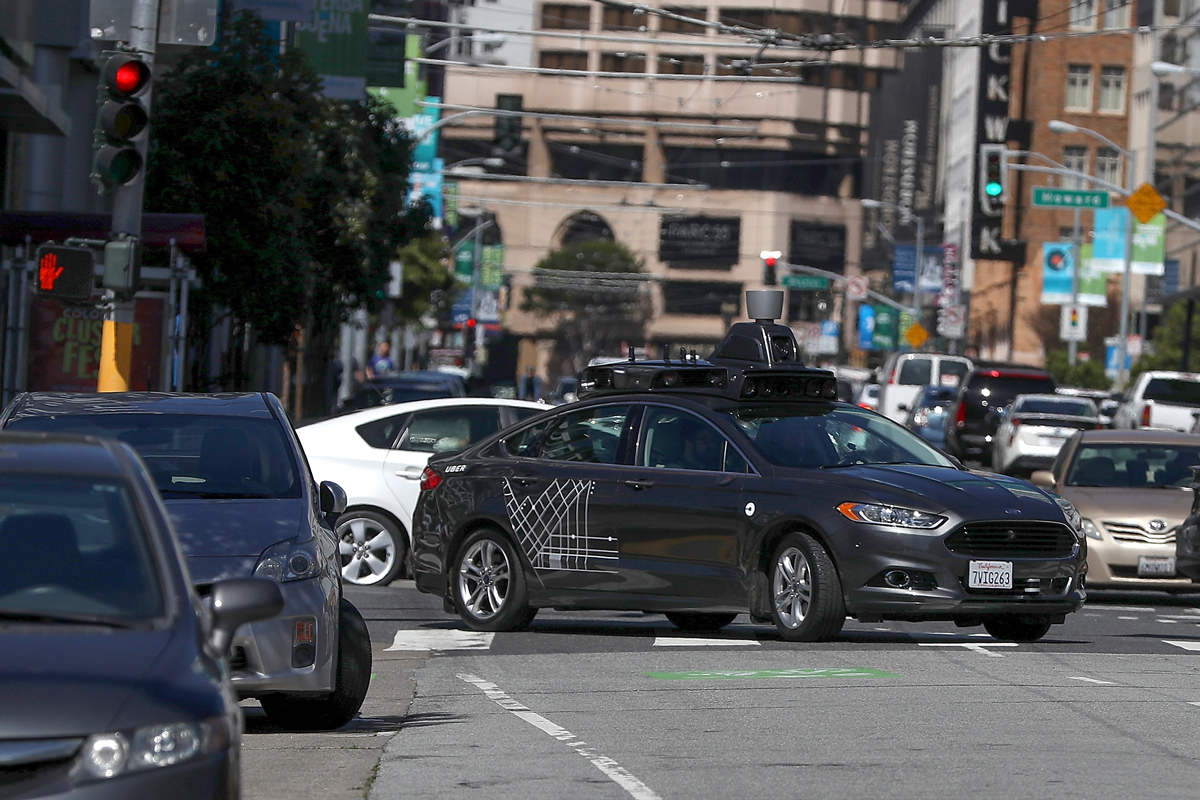Self-Driving Car Kills Pedestrian in Arizona. Human Drivers Will Kill 6,000 This Year.

While crossing the street on Sunday night (March 18), a 49-year-old woman in Tempe, Arizona was struck and killed by a self-driving car operated by Uber.
Though the autonomous car had a human safety driver behind the wheel who could have theoretically taken control, neither car nor driver detected the pedestrian — who was walking her bike across an intersection — before the vehicle struck her at roughly 40 miles per hour. The woman, Elaine Herzberg, died of her injuries in what is thought to be the first pedestrian fatality caused by a self-driving vehicle on a public road, the New York Times reported.
Local authorities and Uber are investigating the accident, which has already begun drawing public attention to the risks and benefits of self-driving cars. The accident may result in safer autonomous cars regulated by more stringent oversight. Still, many researchers believe that more self-driving cars will ultimately be safer than their human counterparts — and they may be right. [Self-Driving Cars: 5 Problems That Need to Be Addressed]
"More than 90 percent of car crashes in the U.S. are thought to involve some form of driver error," Peter Hancock, a professor of psychology and civil engineering at the University of Central Florida, wrote in The Conversation. "Eliminating this error would, in two years, save as many people as the country lost in all of the Vietnam War." (In other words, about 58,000 people).
Road traffic is the 5th leading cause of death in the world, and the United States is one of the deadliest high-income nations when it comes to highway safety. According to a report recently released by the U.S. National Highway Traffic Safety Administration, 37,461 people died in traffic accidents in 2016. About 5,987 of those deaths were pedestrian fatalities — roughly 16 every day. Compared to 2015, pedestrian fatalities increased by 9 percent, resulting in the highest pedestrian death toll since 1990.
This upward trend in pedestrian deaths is, sadly, not new; pedestrian fatalities have climbed steadily in 6 out of the 7 years between 2009 and 2016, resulting in nearly 2,000 more deaths per year in 2016 than in 2009, according to the Governor's Highway Safety Association (GHSA), a nonprofit implemented to address behavioral safety issues among drivers. Many factors likely contribute to this unsettling trend, the GHSA wrote, including economic conditions, fuel prices, an increase in the total number of vehicle miles traveled nationwide and the challenge of rapidly increasing smartphone use distracting both drivers and pedestrians.
Even in crashes that involve self-driving vehicles, unpredictable or distracted human behavior may often be at fault. A 2015 study by the University of Michigan's Transportation Research Institute found that, per millions of miles traveled, autonomous cars had a higher crash rate than human-piloted cars — however, no self-driving cars had been found at fault for the crashes they were involved in. Teaching self-driving cars to respond to unpredictable human behavior may be the technology's greatest challenge going forward.
Sign up for the Live Science daily newsletter now
Get the world’s most fascinating discoveries delivered straight to your inbox.
So far, only one other human fatality has occurred in a crash involving an autonomous car. In 2016, a motorist driving a tractor trailer swerved in front of a Tesla Model S driving in self-drive mode. The Tesla failed to engage its brakes in time, crashing into the trailer ahead of it and killing the Tesla's human safety driver.
Originally published on Live Science.

Brandon is the space/physics editor at Live Science. His writing has appeared in The Washington Post, Reader's Digest, CBS.com, the Richard Dawkins Foundation website and other outlets. He holds a bachelor's degree in creative writing from the University of Arizona, with minors in journalism and media arts. He enjoys writing most about space, geoscience and the mysteries of the universe.









